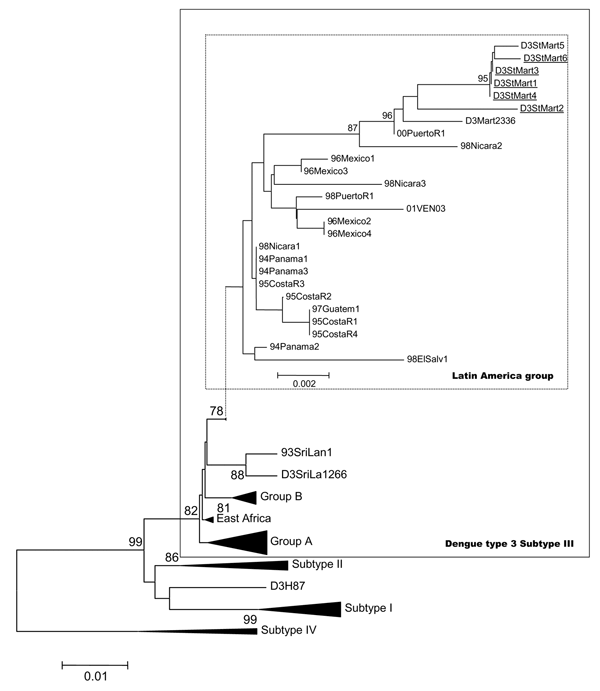Volume 11, Number 5—May 2005
THEME ISSUE
Dengue and Dengue Hemorrhagic Fever
Dengue and Dengue Hemorrhagic Fever
Dengue Type 3 Virus, Saint Martin, 2003–2004
Figure 3

Figure 3. . Phylogenetic tree of dengue type 3 subtype III viruses, based on prM/M and partial E nucleotide sequences (nucleotide numbers 437 to 1144) available in GenBank database. Phylograms were constructed with the MEGA 2 program (15), using the Jukes-Cantor algorithm and the neighbor joining method. The percentage of successful bootstrap replicates (1,000 bootstrap replications, confidence probability >90%) is indicated at nodes. The length of branches is proportional to the number of nucleotide changes (percentage of divergence). The strains sequenced in this work are underlined. Dark triangles correspond to viruses of the same group clustering together; dots indicate a change in scale.
Page created: April 24, 2012
Page updated: April 24, 2012
Page reviewed: April 24, 2012
The conclusions, findings, and opinions expressed by authors contributing to this journal do not necessarily reflect the official position of the U.S. Department of Health and Human Services, the Public Health Service, the Centers for Disease Control and Prevention, or the authors' affiliated institutions. Use of trade names is for identification only and does not imply endorsement by any of the groups named above.